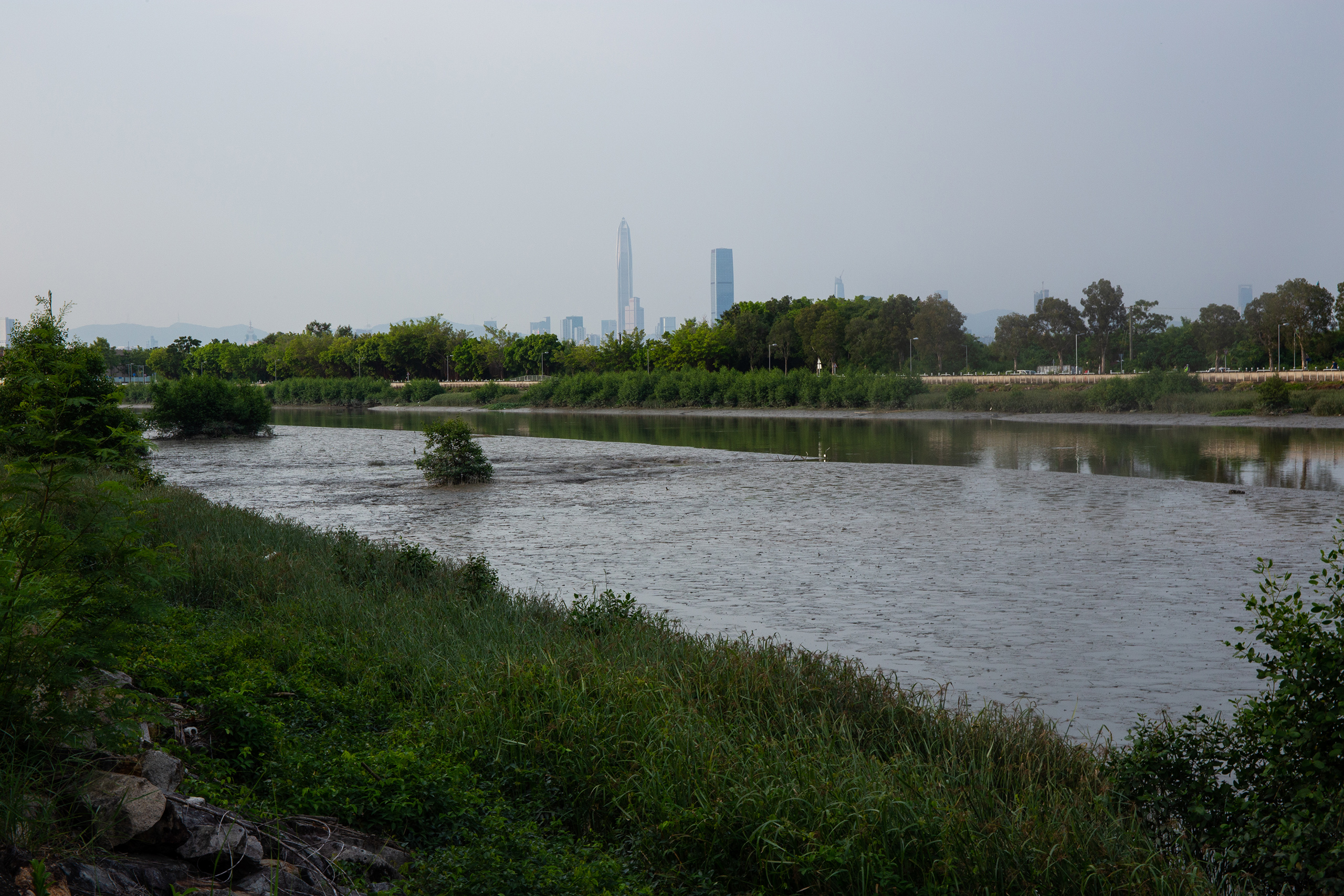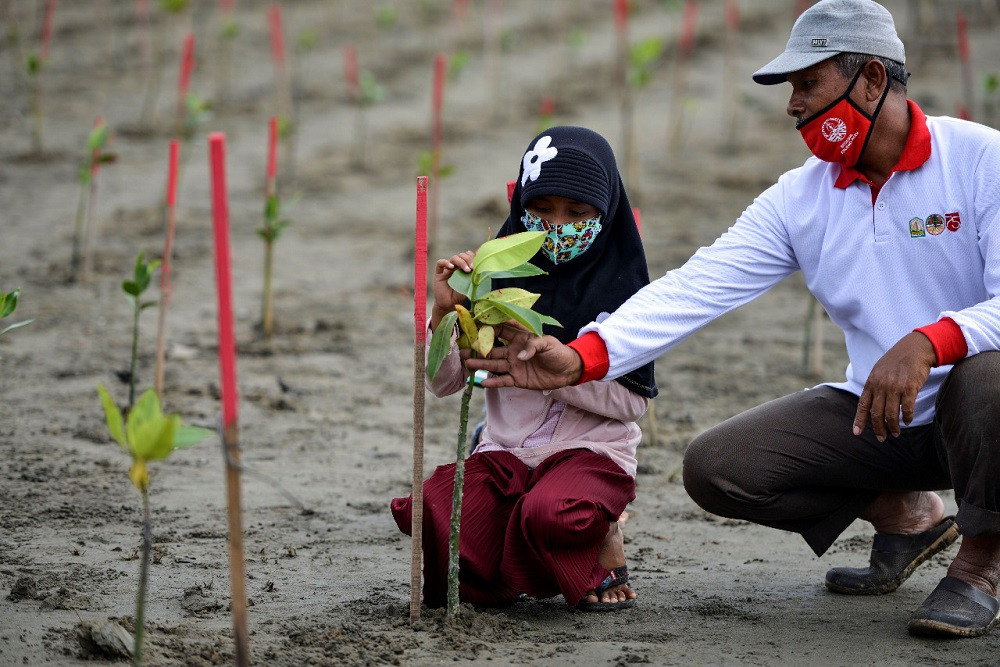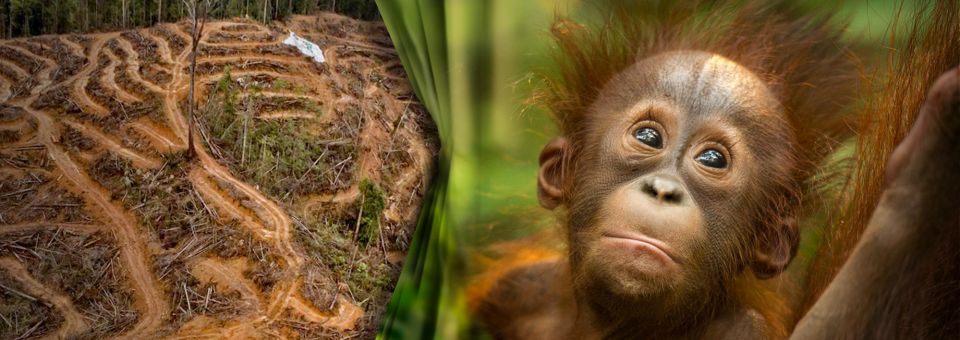Rare and Critically Endangered Mangrove Species Has Been Sighted in Maldives

MALDIVES – Bruguiera Hainessii is a species of mangrove belonging to the Rhizophoraceae family. It is native to Indonesia, Malaysia, Singapore and Papua New Guinea. Bruguiera Hainessii is listed as critically endangered by International Union for Conservation of Nature (ICUN). Ministry of Environment announced via a press release that this rare and endangered species of mangrove plant have been sighted in Maldives for the first time at the protected wetland area situated at Kelaa, Haa Alif Atoll. Four of these plants were discovered and identified during an ecological field survey conducted this March by the ICUN’s Mangrove Specialist Group Red List Coordinator, Dr. Jean Yong. There is a possibility of Bruguiera Hainessii existing in other parts of Maldives. With this new addition, 15 different types of mangrove plants have been identified in Maldives. The Ministry further revealed that discussions were already underway to designate a local name for the Bruguiera Hainesii plant. According to a global survey in 2010, the world had just 200 fully grown trees of the species, and was drawing rapidly close to extinction. Environment Ministry described the discovery of the rare mangrove species in Kelaa as an additional feature which makes the island unique. READ MORE GLOBAL MAP Named as 2020 .ORG Impact Award Finalist

GLOBAL – Mangrove Action Project was recently named as Finalist in .ORG Impact Awards. Public Interest Registry (PIR), the People behind .ORG, recently named the finalists for the 2nd annual .ORG Impact Awards, which honor the remarkable organizations and individuals making the world a better place. The announcement includes the top five entries across 9 award categories. Winners in these categories and the .ORG of the Year will be announced as part of “The Ten Days of .ORG,” an online experience beginning on November 30th that celebrates the range of achievements that have healed, inspired, transformed and connected communities over the past year. Each day of the celebration will place a spotlight on an award-winning organization and individuals making an impact in areas such as combatting the coronavirus, battling poverty and hunger, championing equality, and advancing environmental sustainability. Advancing Environmental Sustainability: Mangrove Action Project – Protecting the world’s mangrove forests. READ MORE Total alkalinity production in a mangrove ecosystem reveals an overlooked Blue Carbon component

GLOBAL – Blue Carbon ecosystems (seagrass meadows, mangroves, and saltmarshes) sequester atmospheric CO2 as organic carbon in their sediments for periods of centuries to millennia. Calcium carbonate (CaCO3) dissolution is another major permanent sinks of atmospheric CO2 in the coastal area, but has been disregarded in Blue Carbon ecosystems. In the Red Sea, as in many tropical areas, Blue Carbon ecosystems thrive on carbonate sediment generated by the erosion of coral reefs. Our study reveals that the dissolution of CaCO3 is a major sink of atmospheric CO2 in carbonate sediment mangroves, representing 23‐fold the sink from organic carbon sequestration at our Red Sea mangrove site. The CaCO3 calcification and dissolution budget should be considered in future Blue Carbon assessments. READ MORE Boosting Education for Greener Forests

GLOBAL – There is growing international concern over the quality and availability of training and education needed both to prepare those whose daily work and decisions most closely impact the sustainable management of forests, and to inform new generations who will look after forest resources in the future. We can only guess at how many children these days dream of being a forester when they grow up – likely too few. For the sake of our forests, we have to turn this situation around. We need talented students to enter forest education programmes. We need well-trained forest managers and policymakers. We need to provide more opportunities for informal training and continuing education for forest communities and forest owners and businesses. And we need to reach the broader public. After all, there is important work to do. READ MORE AMERICAS No prosecution over dumped concrete in Red Bay mangrove

CAYMAN ISLANDS – The Department of Environment will not recommend prosecution against National Concrete, after a company truck was spotted Monday evening dumping concrete into a mangrove swamp in Red Bay. A department officer visited the site at Prospect Point Road Tuesday morning, after workers had already cleared the concrete and part of the mangrove using a backhoe and shovels. While unauthorised mangrove destruction has been illegal since April, under the mangrove conservation plan, DoE Director Gina Ebanks-Petrie said it would not be fair at this time to recommend prosecution against the offending party. The National Conservation Law’s mangrove plan came into effect during the COVID-19 lockdown and, as a result, Ebanks-Petrie said companies may not be aware that it is illegal to dump their waste directly into the mangrove swamp. READ MORE ASIA Cambodia: Save Koh Kong Island! Sign the petition

CAMBODIA – Koh Kong, Cambodia’s largest island, is a slice of paradise with its lush tropical lowland rainforests, waterfalls and freshwater lagoons, white beaches and mangroves. “We’re proud that such an amazing place, which was left to us by our Khmer ancestors, still exists. Now it’s up to our generation to preserve these priceless natural treasures,” explains Thun Ratha in a video by the environmental NGO Mother Nature that highlights the island’s beauty. “Save Koh Kong Island” is their campaign to defend this unique place against exploitation. Saving the island for posterity will mean ensuring its complete protection. Cambodia’s government apparently has other plans – in June 2019, Prime Minister Hun Sen announced that the L.Y.P. Group had been given the green light to “develop” the island. The group’s holdings include luxury resorts, amusement parks, sugar and rubber plantations and other businesses. Conservationists therefore fear the worst. While the Environment Ministry announced that the island and its surroundings would become a marine national park in 2021, previous statements indicated that some regions would be protected, while others would be declared economic zones. READ MORE Guardians of the Pearl River delta: a photo journey

HONG KONG – Nestled deep within one of the many bays of the Pearl River delta, a rare patch of mangrove forest can be found hidden between the towering skyscrapers on the Hong Kong–Shenzhen border. Egrets laze in the sun as small crabs scuttle at their feet, a mountainous skyline of construction cranes looming behind them. Mangroves are small trees that grow along the coastlines of more than 100 countries in tropical and subtropical regions. They were once widespread on the Pearl River delta and around the inlets and islands of the neighbouring Hong Kong Special Administrative Region (SAR). Now there are only about 60 small patches remaining in Hong Kong – the largest is at Mai Po, at the head of Deep Bay (also known as Shenzhen Bay). Protected by the Mai Po Nature Reserve, this mangrove forest and the surrounding mudflats has been designated as a Wetland of International Importance under the Ramsar Convention since 1995. It is part of a Hong Kong success story, albeit a limited one. After years of degradation, a recent survey conducted by Dr Stefano Cannicci from Hong Kong University’s Integrated Mangrove Ecology Lab found that mangroves are now making a recovery in the region. READ MORE Replanting alone won’t stop mangrove degradation

INDONESIA – When 53-year-old Azizi is not tending to his crab farm, he would be nursing the 456-hectare mangrove forest near his home in the village of Gambus in North Sumatra’s Batu Bara regency. The former fisherman said recently that fewer than three-quarters of the nearby mangroves were in good condition, but the same could not be said for the rest of the regency’s mangrove cover, about 70 percent of which is damaged. Some areas were being converted into oil palm plantations or prawn farms, he said. The mangrove degradation had caused landslides in neighboring villages, he claimed, sinking 30 to 50 houses. He said the dwindling mangrove cover would allow strong wind to pass through, potentially damaging nearby neighborhoods in the future. “It’s a big risk,” he said. “We have to be ready to let our houses plunge [to the sea] if we are not ready to preserve our mangroves,” he said. But natural disasters are just among a slew of negative effects as a result of mangrove degradation, activists warned, as failure to prevent mangrove degradation also harmed biodiversity and caused economic losses for communities that depended on mangroves for a living. READ MORE Sankar and his community dig canals to save Muthupet’s mangroves

INDIA – Driven by a sense of urgency to protect the ecosystem which has been a source of livelihood for his family and community for generations, Sankar began to seek out organisations and agencies that could help him understand the science behind the importance of mangroves. In 1997, the then 30-year-old enlisted help from MSSRF. “I knew how marine animals make the roots of the mangroves their home and how they are also sometimes used as breeding areas, but after my association with scientists and researchers, I got to know how mangroves help in maintaining an ecological balance among the sea, the land and the rivers,” says Sankar, a fisherman. There were 200 traditional fishing canals in Muthupet, but on realising the importance of the inflow of fresh water to keep the soil salinity in control, Sankar began to mobilise his community to dig more canals — with the help of the Tamil Nadu Forest Department — leading the Cauvery river water into the wetland. Over 20 years, Sankar worked closely with researchers to educate the coastal community on the importance of mangrove forests to their livelihood and, with the Forest Department, to dig over 3,000 canals spread across 5,000 hectares. These canals are also his legacy. READ MORE EUROPE Ban forest killing products Sign the petition

U.K. – 15 BILLION trees are chopped down every year — 476 every single second. That’s our rainforests, jungles, and woodlands being decimated to make space for ever more cattle, palm oil, and soybeans. But today we have a unique opportunity to change it. Right now the EU is considering a new law to ban any products linked to deforestation. If the law passes, the EU is such a massive market that it could force the world’s biggest companies to change, transforming the global supply chain, and helping to save our woodlands, wetlands, and mangroves. Earth needs this law — so let’s win it now and help save the world’s forests! Add your voice before the consultation closes, and tell everyone you can. READ MORE Forests, forest stakeholders key for achieving Sustainable Development Goals

ITALY – Achieving the Sustainable Development Goals requires halting deforestation, protecting intact forests and restoring degraded forest landscapes – and an upsurge of action by communities, forest industries and responsible businesses provides the best hope of doing so, according to speakers in the High-Level Dialogue on Forests in the Decade of Action held during the 25th Session of the FAO Committee on Forestry last week. The United Nations Secretary-General has called on all sectors of society to mobilize for a decade of action – comprising global action, local action and people action – to achieve the transformations needed to end poverty, safeguard the planet and build a peaceful world. This High-level Dialogue, held as part of the 25th Session of the FAO Committee on Forestry, generated insights and guidance on how forestry can contribute to the Decade of Action to deliver the SDGs. Tony Simons, Executive Director of CIFOR-ICRAF, who moderated the dialogue, noted that forests receive little explicit attention in the SDGs. This is surprising for a biome that, said Simons, covers 30 percent of land, transpires 60 percent of water and houses 80 percent of terrestrial biodiversity. READ MORE NEW – VIDEO FEATURE We will feature new videos here for you to enjoy. Please visit these important projects site and take advantage of the increasing information available through videos! SUSTAINABLE COMMUNITY-BASED TOURISM IN THAILAND

Like this newsletter?
Pease consider donating to MAP to keep it going.
Giving could never be easier  | ACTION ALERTS BAN FOREST-KILLING PRODUCTS
Sign the petition Protect Grenada from Destructive Development! SIGN THE PETITION Please SIGN: keep plantations out of orangutan habitat!
TAKE ACTION
Like this newsletter? Pease consider donating to MAP to keep it going. Giving could never be easier
CBEMR Training in Tanzania: Ground-breaking training breathes life into mangrove ecosystem restoration – The Mangrove Alliance Please see our newest video: ” Restoring The Natural Mangrove Forest” – https://youtu.be/Vh7CoPBLQa8 Mangrove Restoration Map VIEW MAP HERE 
Restoring The Natural Mangrove Forest
Watch movie 
Community Based Ecological Mangrove Restoration in Rufiji Delta VIEW VIDEO Video: Mangroves for the Future – A look bacK. As the latest phase of Mangroves for the Future (MFF) draws to a close, this video highlights some of the project’s most successful initiatives – from local women supporting national park management in Viet Nam to an island in the Maldives that has become a model for waste management, and everything in between. View Here WANT TO GET INVOLVED?
Follow and Join MAP!    
Like this newsletter? Pease consider donating to MAP to keep it going. Giving could never be easier 

Singing for the Sundarbans WATCH HERE Entrevista con Monica Quarto del Mangrove Action Project (Spanish language) Oye Aqui
VOLUNTEER OPPORTUNITY 
MANGROVE ISSUES Want to learn more about mangroves?
Our short presentation will give you a better understanding of the issues we are working to solve. WATCH PRESENTATION What is CBEMR? Download MAP’s 2 page CBEMR Information Sheet containing links to all MAP’s CBEMR resources – CLICK HERE What is EPIC? – The Ecosystems Protecting Infrastructure and Communities (EPIC) project: the role of ecosystems as protective barriers against climate induced hazards MANGROVES APP AVAILABLE
A pictorial field guide for easy identification of various mangrove species and learning about the mangroves ecosystem. CLICK HERE View MAP’s uploaded Videos at MAPmangrover’sChannel
Question Your Shrimp Consumer/Markets Campaign!
WATCH VIDEO Mangrove Restoration in Asia – Watch Short Video The Value of Mangrove Forests View Video CBEMR Experience Exchange MAP 2017 English Subtitles
VIEW THE VIDEO Mangroves: Guidebook to Malaysia – Click Here
Mangrove rehabilitation in Asia – Local Action and cross-border Transfer of Knowledge for the Conservation of Climate, Forests and Biodiversity VIEW VIDEOS HERE SHARE MAP’S VISION
CLICK HERE to watch short introductory video. Together we can work “at the roots of the sea”. Our short documentary, Reducing the Risk of Disaster through Nature-Based Solutions : Mangroves

INTERVIEW – Yale Climate Connection interview with MAP’s Alfredo Quarto LISTEN Exclusive Interview with Alfredo Quarto, Co-Founder and Executive Director of Mangrove Action Project – See more
Marvellous Mangroves Curriculum The Marvellous Mangroves Education Forum is an online hub for those utilizing the Marvellous Mangroves (MM) Curriculum. It gives students, teachers and anyone interested in mangroves, the opportunity to learn and share ideas themed around the curriculum, to connect and communicate with others around the globe whilst exploring mangroves from your computer or on the go. VISIT 
The award-winning Marvellous Mangroves (MM) curriculum educates children on the importance of mangroves and their ecological functions, teaching them about modern challenges and mechanisms for sustainability. VIEW VIDEO Marvellous Mangroves Curriculum in Bangladesh – WATCH VIDEO
MARVELLOUS MANGROVES IN BRAZIL
En Portuges 
Marvellous Mangroves – A Curriculum-Based Teachers Guide. FOR MORE ON MAPs AWARD WINNING CHINA MANGROVE CURRICULUM VISIT

VIMEO SHOW
VISIT OUR “MM” WEBPAGE Check out our presentation for more details on Marvellous Mangroves Read this 10 page history of the development of MAP’s educational curriculum VIEW DOCUMENT
Article in Canada’s Green Teacher Magazine – Read More
Like this newsletter? Pease consider donating to MAP to keep it going. Giving could never be easier 
Green Planet Fundraising Assists MAP – LEARN MORE
Volunteer Opportunities with Mangrove Action Project CLICK HERE
“Question Your Shrimp” Campaign Question Your Shrimp- Don’t Buy or Sell Imported Tropical Shrimp! Sign the Petition Learn more about the affects of the shrimp industry on mangroves by visiting our blog
Editor’s Note: Mangrove Action Project’s Executive Director, Alfredo Quarto was interviewed about shrimp by Green Acre Radio’s Martha Baskin
LISTEN TO INTERVIEW Sign the Consumer’s Pledge to avoid imported shrimp
Note to Our Readers: We strive to keep active links in our newsletter. However, due to circumstances beyond our control, occasionally links to stories may become broken. If you find a link to a story is not functioning, please cut and paste the headline into your browser search bar. In most cases you should be able to locate the original story.
Not yet a MAP News subscriber?
Click here to subscribe.
|




























